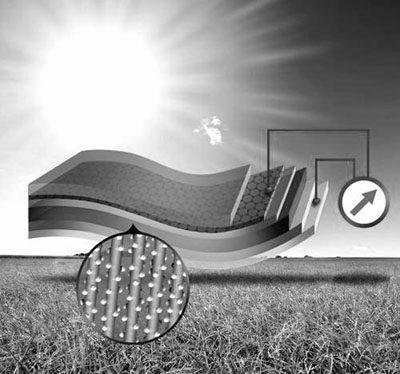Recently, researchers at the Massachusetts Institute of Technology developed a new method for coating nanowires on flexible graphene sheets. This method can produce low-cost, transparent and flexible solar cells that can be used on the surfaces of windows, roofs, and other objects.

Graphene sheet nano coating
The latest research results were published in the recent Nano Express newspaper. The co-authors include MIT postdoctoral scientists Pu Huixing and Zhang Shenggen, associate professor of materials science and engineering, Sergey Gretek, and others. 8 researchers from MIT.
At present, most solar cells are made of silicon. Since silicon needs to be highly purified and then made into crystals and cut into thin slices, the price has always been relatively expensive. Many researchers are exploring alternatives to silicon, such as nanostructures or hybrid solar cells, and indium tin oxide (ITO) is a transparent electrode used in these new types of solar cells.
Gretek said: "At present, ITO is the first choice for transparent electrode materials, such as touch screen smartphones. However, the price of indium in this compound is high, and graphene is composed of ubiquitous and inexpensive carbon. ."
Gretek said that graphene may be a new material to replace ITO. In addition to its low cost, it also has advantages such as good flexibility, light weight, high mechanical strength and chemical stability.
Due to the stability and inert structure of graphite, it is highly challenging to construct a semiconductor nanostructure directly on the surface of pure graphene without affecting its electrical properties and structure. So Gretek and his team used a series of polymer coatings to change the properties of graphene so that it could bind the zinc oxide nanowire layer and then cover it with a sulfide quantum dot that responds to light waves or a Material polymer for P3HT.
Gretek said: "Despite the changes, the intrinsic properties of graphene remain unchanged. It is a composite material with significant advantages."
The MIT team has confirmed that electrodes based on graphene and ITO are comparable in terms of efficiency. In the case of covering sulfide quantum dots, graphene has a 4.2% lower power conversion efficiency than a general-purpose silicon cell, but will be competitive in special applications in the future.
In addition, Zhang Shenggen, a postdoctoral researcher at the Massachusetts Institute of Technology's Department of Materials Science and Engineering, said that unlike other semiconductors whose temperature has been steadily increasing, graphite electrodes coated with zinc oxide nanowires can completely control the temperature at 175. Below Celsius.
Children Toy Mould,Plastic Toy Mould,Toy Mould
Pipe Fitting Mould CO.,Ltd , http://www.gosmould.com